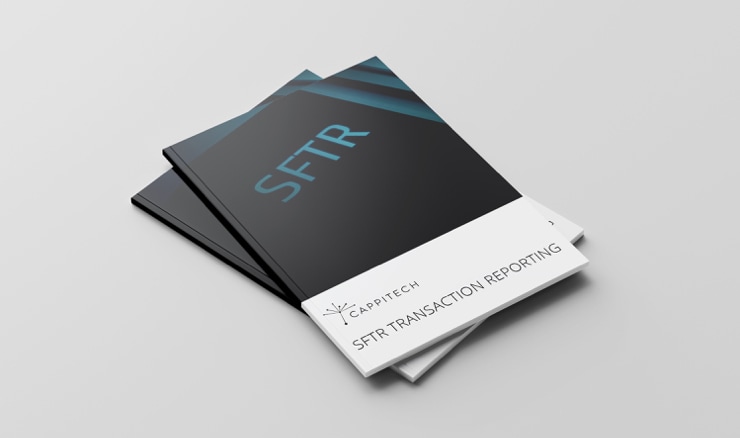
Lessons learned a year into SFTR regulation
Following the go-live of the Securities Financing Transactions Regulation (SFTR) in July 2020, IHS Markit and Pirum’s SFTR Post-Implementation Industry Survey, conducted a year later, found that a key consideration for firms were data harmonization, improving overall data quality and enhancing the quality and accuracy of their reporting, particularly for collateral data to meet regulatory requirements for greater transparency. Importantly, the report said that while fines for SFTR non-compliance or inaccuracy have not been handed out to date, regulators still expect firms that are in scope to ensure they are reporting accurately and promptly.
Consolidated reporting
Over 70 per cent of respondents — banks, asset managers, hedge funds and brokers — aim to consolidate their various regulatory reporting requirements. The number of regulations worldwide that global firms, and local firms, are subject to is expanding. There may be different nuances of the same regulation being implemented across different regions and, for those firms with a global reach, it makes sense to manage all these various regulations in an integrated way. In the past, many firms had a tactical approach to these various regulations, where they would handle them individually in a rather siloed way. Now, based on the sheer volume of the reporting and its associated complexity, it is more efficient for firms to approach this using a single, integrated team to manage this change agenda.
There is also a push from regulators around the world for data harmonization, recognizing the advantages for data quality in leveraging the same underlying data and the cost benefits of eliminating duplicate reporting and processes. There has been a large progress of regulatory initiatives to move towards data harmonization, with particular effort to coordinate internationally and with the market in a practical way. Regulators coordinate around Financial Stability Board and CPMI IOSCO tables, industry standards are promoted and supported whenever possible, supervisors encourage the reuse of data across areas, asset classes and regulations. There are also industry efforts or public-private initiatives, such as the Bank of England’s Data Collection program, which provide a forum that bridges financial regulators, the industry and third-party providers. The European Commission EU financial data space has developed a supervisory reporting strategy with ‘SupTech’ and ‘RegTech’ supervisory and regulatory technology, promoting data standards and sharing, and digital finance.
Firms themselves aim to move away from legacy systems and get a more efficient streamlined data management, collection and reporting. However they that have already invested heavily in in-house technology to meet regulatory reporting needs may find it difficult to abandon their legacy systems. Most of the times urgencies such as adapting to the latest schema upgrade or trade repository switch may delay their longer-term strategic plans.
With over 70 per cent of respondents claiming they aim to bring together their various regulatory reporting requirements under a single platform in the not-too-distant future, firms may face challenges in consolidating their reporting requirements. But there are clear upsides. Choosing an outsourced service from a third-party can help support this switch. Regulations and requirements constantly evolve, and this can present a heavy maintenance overhead in keeping internal systems up-to-date: Third-party vendors can offer their “Insight” business intelligence tool and learnings such as IHS Markit across 200-plus clients or members on SFTR, and share the cost across a wide community of users, bring added value in terms of technology innovation, providing analytics and reporting tools for clients to navigate through large amounts of data, better control their flows and identify root causes of an issue.
Data Quality
The survey identified improving overall data quality as a top priority for respondents. In particular, quality and accuracy of reporting around collateral data was identified as a key area of improvement.
SFTR Data quality is of utmost importance for regulators to promote greater transparency as prioritized in the ESMA, EMIR and SFTR data quality report of April 2021: the second round of National Competent Authorities tests will take place in November 2021, with expected improvement on the same areas of focus than in the first round of tests in June 2021: un-reporting, pairing, rejections and timelines. Business intelligence tools such as SFTR Insights by IHS Markit provide firms with a granular analysis of their data pre and post submission to trade repositories as well as cross UK or EU.
Pairing
Unique trade identifier (UTI) pairing was probably the major challenge going into SFTR, according to respondents. But a year after SFTR went live, 80 per cent of firms say they have been able to achieve all or most of their pairing. By contrast, only 28 per cent of respondents are satisfied with their UTI pairing for EMIR several years after implementation.
Despite all the issues, there does seem to be a higher matching and pairing level in SFTR versus EMIR, due to the fact more testing has been done prior to go-live, more engagement with the industry and between the different participants, and probably with more clarity in terms of controls. With this framework in place, the environment was ready for the moment of trade.
Regulators have taken into account some life cycle events issues on SFTR such as trades terminated or with a maturity end date sent by mistake to address them in other regimes such as EMIR REFIT which should go live second half of 2023.
EMIR pairing rates are at around 50 per cent seven years after the go live, whereas for SFTR the pairing rates are now already at circa 50 per cent at the TR and 80 per cent for trades just one year after the go live. Platforms such as IHS Markit’s solution helped with the pairing because it provides a timely and flexible view of what happens before data are sent to the Trade repositories. Before getting to the TR, firms need to have a UTI first. Its exchange is achieved through the reconciliation of minimum key pairing fields, which should help both parties communicate to align on bookings, life cycle events and key trade economics. For SFTR, firms could already leverage an existing reconciliation process on trade economics for billing and settlement on securities lending and repo. This is all the more valuable as reconciliation at the Trade repository is dwindling in terms of scope, according to the latest TR stats, it represented half of the trades, hence more than half of the SFTs are not single sided. However this eludes the benefits of reconciliation as mentioned above. Some parties see the benefits of a pre-matching platform to improve data quality and do better for their operational processes beyond just ‘getting over the lime’ for their reporting obligations.
Resources
Human capital and adequate resources are a critical element for a successful transition to Business as usual: firms also need to have the right people, with adequate expertise in terms of technology, business and knowledge across regulations. Third parties can help towards the shift to digital skillsets. There are also working groups from the trade bodies and associations that IHS Markit are a member of such as those held by ICMA, ISLA and ISDA. IHS Markit encourages firms to take part in these groups to ensure they are aware of all the work which is being done in terms of data harmonization and best practices. One key lesson for SFTR is the incredible cooperation between industry associations, TR, firms and data providers
Testing and timelines
Another key lesson here for other regulatory regimes lies in about sufficient lead time for testing and the importance of coordinated tests across all participants along the reporting chain. There were five ISO 20022 XML schema changes along with fields validation rules for SFTR . The upcoming changes planned for 31 January 2021 added with Unavista moving out of SFTR offer, end of year code freezes and new reconciliation fields going live in April 2022.
While fines for SFTR non-compliance or inaccuracy haven’t been levied to date, regulators have shown that as new reporting regulations are bedded down, they expect firms that are in scope to ensure they are reporting accurately and promptly. But just how well are in-scope firms now equipped to meet this obligation? Firms need to report, they need to report everything in scope, and they need to report on time. We also really need to stress the audit and control function. Firms may not achieve 100 per cent of pairing but if there is an issue then they need to be able to document and trace back quickly to the root cause, and the tools to achieve that are extremely important.
Past experience
Looking back at previous regulations, it appears that controls were the ‘forgotten child’ for EMIR, because they were put in place after the regulation was implemented. Whereas with SFTR, controls have been built as far as feasible at the same time as the reporting function. And industry engagement was stronger for SFTR with more testing efforts — bilateral testing, then multilateral testing, were key and pre-matching platforms allowed for UTI exchange testing prior to go-live on a mass scale.
A significant portion of the market uses the IHS Markit platform and in order for IHS to pair the trade the firm uses the UTI, but it’s not absolutely necessary for the pairings. When it comes to doing the reporting to the trade repository, one would expect that more UTIs have been pre-reconciled alongside the minimum fields required by the trade repository. So, there is this infrastructure to increase the data quality of the firms bilateral trades before it gets to the TR whereas with EMIR they probably didn’t have that in place.
Article was co-written with Fabien Romero – Product Management Executive Director in IHS Markit Global Regulatort Reporting Solutions team.





